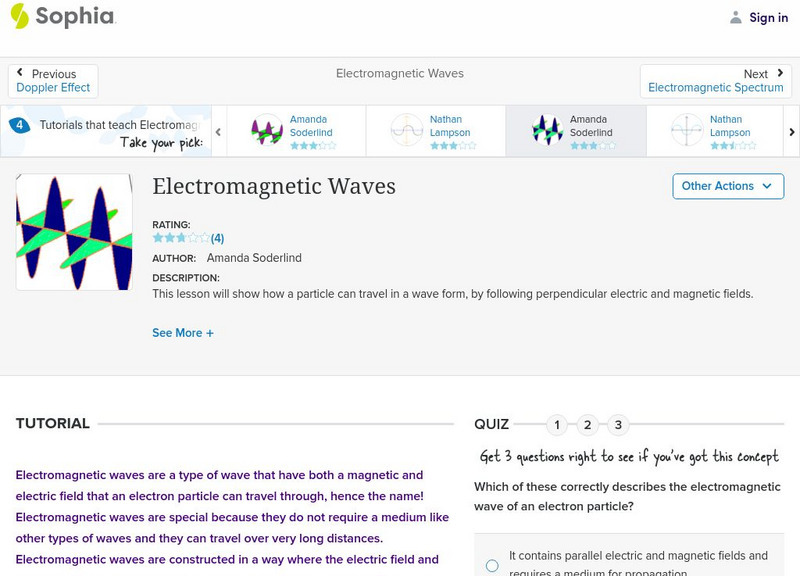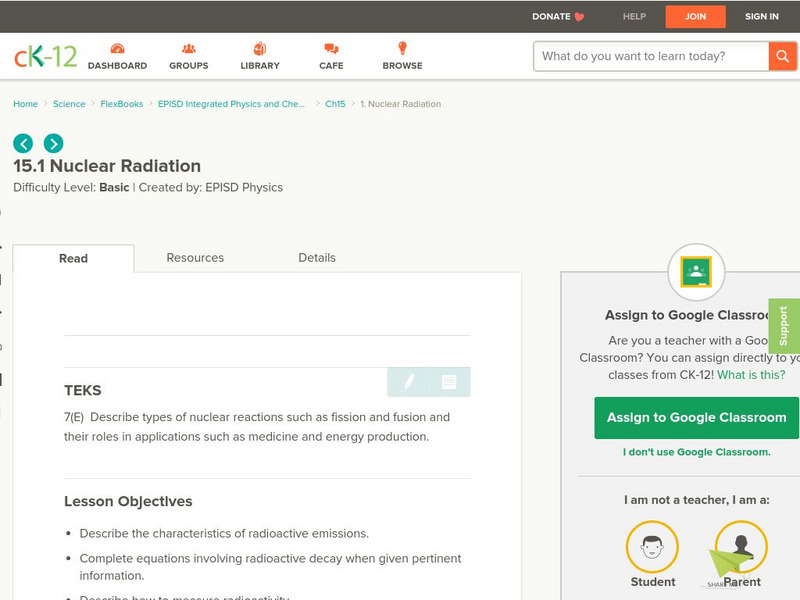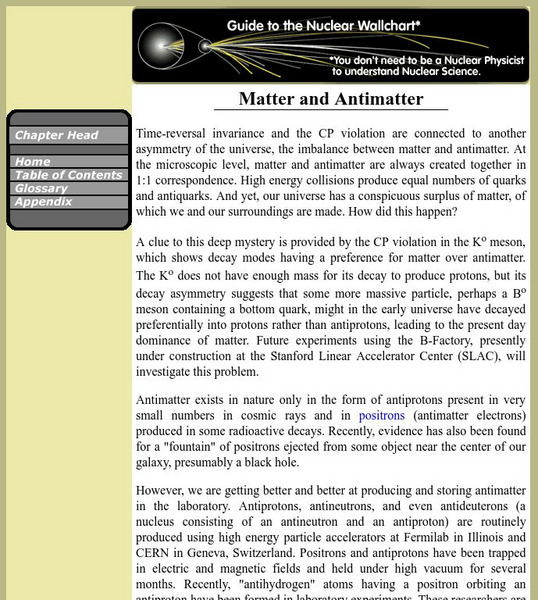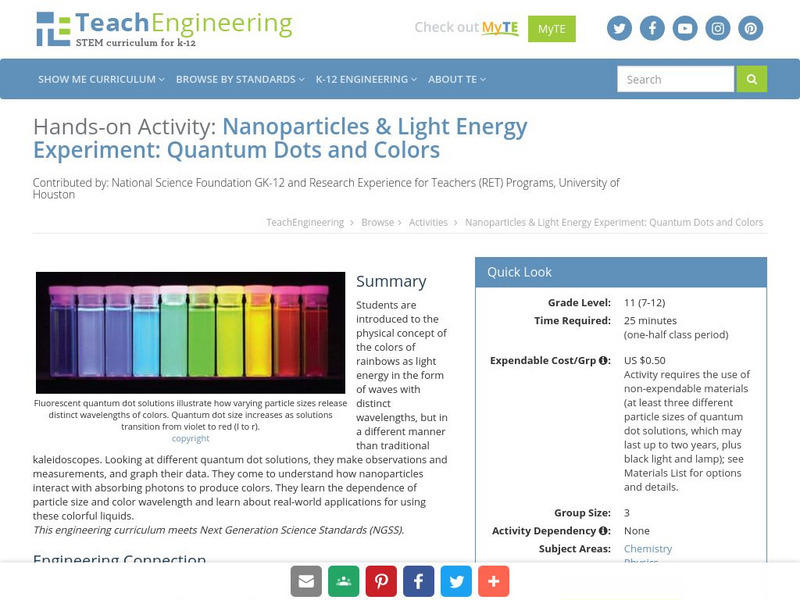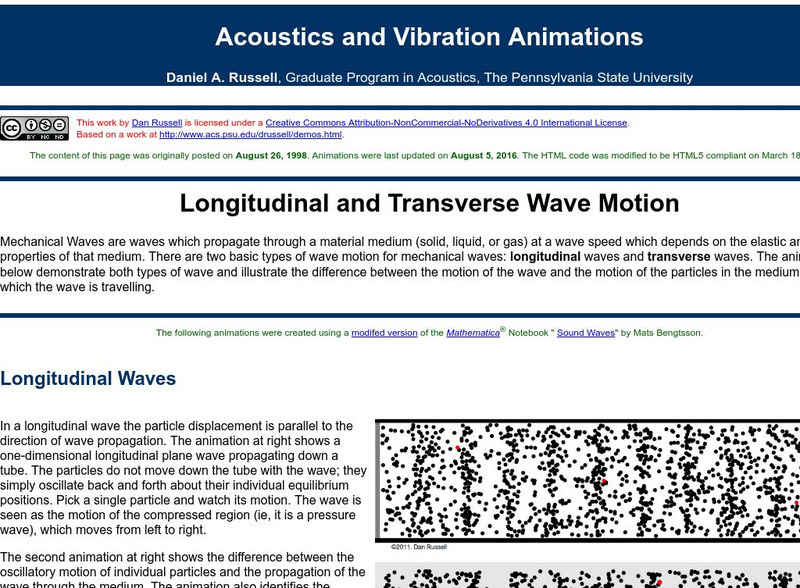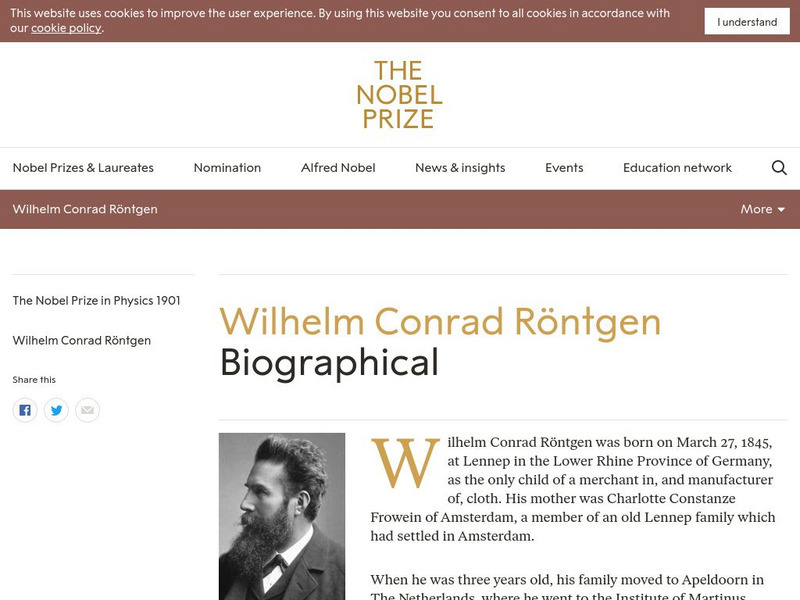Sophia Learning
Sophia: Electromagnetic Waves: Lesson 4
This lesson will show how a particle can travel in a wave form, by following perpendicular electric and magnetic fields. It is 4 of 4 in the series titled "Electromagnetic Waves."
Nobel Media AB
The Nobel Prize: Johannes Diderick Van Der Waals Biographical
This site from the Nobel eMuseum of the Nobel Foundation provides an excellent overview of Johannes van der Waals. This detailed biography covers all aspects of his life, with a particular emphasis on his scientific achievements.
OpenStax
Open Stax: Atomic and Molecular Explanation of Pressure and Temperature
A college textbook section that explores the kinetic theory. Learn how the kinetic theory relates to ideal gas law and thermal energy. Section includes problems and questions for the students to answer to ensure understanding. Book can...
Other
Reade International Corp.: Specific Gravity Table for Metals, Minerals, Ceramics
This is a table listing the specific gravities of various metals, ceramics, and minerals. Very complete listing and a good resource.
OpenStax
Open Stax: Extended Topic : The Four Basic Forces an Introduction
In the following interactive students will begin to understand the four basic forces that underlie the processes in nature.
CK-12 Foundation
Ck 12: Nuclear Radiation
[Free Registration/Login may be required to access all resource tools.] Students investigate the characteristics of radioactive emissions, and then complete equations involving radioactive decay when given pertinent information.
Encyclopedia Britannica
Encyclopedia Britannica: Nobel Prizes: Carl David Anderson
This site from Encyclopedia Britannica contains a brief biography of Carl Anderson (1905-1991 CE), the discoverer of the positron.
Lawrence Berkeley National Laboratory
Berkeley Lab: Matter and Antimatter
This page examines the existence of matter and antimatter in nature.
Lawrence Berkeley National Laboratory
Berkeley Lab: Misconceptions About Nuclear Science
This site sets the record straight on some common misconceptions about Nuclear Science.
Upper Canada District School Board
Tom Stretton's Chemistry Pages: Atomic Theory Early Ideas
This online slide show helps students understand the early historical thinking that contributed to modern atomic theory.
Upper Canada District School Board
Tom Stretton's Chemistry Pages: Atomic Theory Modern Ideas
This online slide show helps students understand modern scientific thinking which has shaped modern atomic theory.
Other
Nuclearfiles.org: Carl David Anderson
This site from Nuclearfiles.org contains a brief biography of Carl Anderson (1905-1991 CE), mentioning his involvement (or lack thereof) with nuclear weapons development.
Other
Southern Kings Consolidated School: Loess
This site describes loess in pretty good detail, also adding visual with two pictures. Great source for understanding how loess occurs and where it is found.
University of Colorado
University of Colorado: Ph Et Interactive Simulations: Covalent Bonds
Explore tunneling splitting in double well potentials. This classic problem describes many physical systems, including covalent bonds, Josephson junctions, and two-state systems such as spin 1/2 particles and ammonia molecules. Java...
TeachEngineering
Teach Engineering: Quantum Dots and Colors
Students are introduced to the physical concept of the colors of rainbows as light energy in the form of waves with distinct wavelengths, but in a different manner than traditional kaleidoscopes. Looking at different quantum dot...
TeachEngineering
Teach Engineering: Thirsty for Gold
Student teams conduct an experiment that uses gold nanoparticles as sensors of chemical agents to determine which of four sports drinks has the most electrolytes. In this way, students are introduced to gold nanoparticles and their...
Pennsylvania State University
Wave Animations: Longitudinal and Transverse Waves
This physics tutorial features text and animations explaining the particle motion of a medium through which transverse, longitudinal, or surface waves move.
Curated OER
Math Puzzle: Parity
The particle physics type of parity comes directly from math parity, which this site is all about. It also includes links to other sites about parity.
Curated OER
Math Puzzle: Parity
The particle physics type of parity comes directly from math parity, which this site is all about. It also includes links to other sites about parity.
Curated OER
Math Puzzle: Parity
The particle physics type of parity comes directly from math parity, which this site is all about. It also includes links to other sites about parity.
Curated OER
Math Puzzle: Parity
The particle physics type of parity comes directly from math parity, which this site is all about. It also includes links to other sites about parity.
Curated OER
Math Puzzle: Parity
The particle physics type of parity comes directly from math parity, which this site is all about. It also includes links to other sites about parity.
Curated OER
Math Puzzle: Parity
The particle physics type of parity comes directly from math parity, which this site is all about. It also includes links to other sites about parity.
Nobel Media AB
The Nobel Prize: Wilhelm Conrad Rontgen Biographical
This biographical note on Wilhelm Conrad Rontgen describes his boyhood, upbringing, education, scientific work and accomplishments. Focuses on his studies of Xrays.
